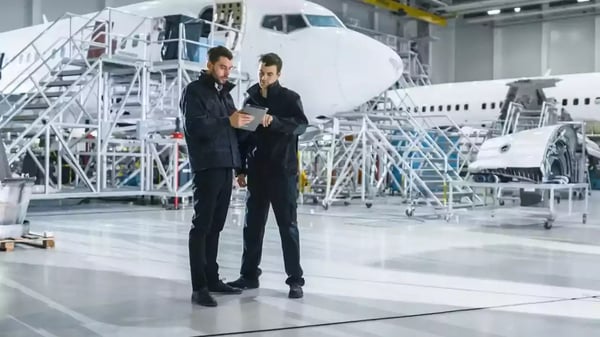The Need for Digitalization in Aviation Tooling Control
Did you know that the digitalization and compliance of tooling control are arguably one of the last areas of the aviation industry to be digitized?
As it stands, most industry players still rely on manual processes. Even though other sectors have embraced the benefits of digital transformation, tooling control is still miles behind.
Forbes recently revealed that the Air Force lost a hefty $14 million F-35 engine due to a misplaced flashlight – an exorbitant loss that could’ve been avoided with efficient tool control software. Regardless of the size or scale of your operations, the aircraft, crews, and passengers should never be subjected to this sort of avoidable risk.

That brings us to the crux of the discussion – choosing the right software vendors for digital transformation within aircraft operations. As digitization of tooling control is long overdue for an overhaul, how much you can reap these transformational benefits depends heavily on the vendor you choose to work with.
Top Innovation Trends in Aviation Maintenance for 2024
As digital transformation is at the forefront of aviation maintenance in 2024, we’re seeing plenty of tech-powered trends. One of these is using Artificial Intelligence (AI) to boost efficiency and reduce operational timeframes.
AI algorithms can do just about anything when it comes to proactive management – detecting the smallest discrepancies to remove manual prevention checks and analyzing patterns to optimize and predict inventory management.
The evolution of aircraft maintenance is also influenced by the increasing relevance of data analytics and predictive maintenance techniques. Machine learning (ML) algorithms and IoT-connected devices can complement AI by fortressing operation safety and aircraft availability.
Choosing the Right Software Vendor for Aviation Tooling Digitalization
Choosing to digitize operations and stray away from traditional manual systems is significant in aviation maintenance, so selecting the right vendor will highly impact the transition’s success.
Making a choice should be a calculated investment, where the goal is to build a more integrated, streamlined, and future-proof operation. The right partner will offer solutions that match up with your operational priorities and are customized to your situation rather than generic.
The difference between the right and wrong selection could affect how well you and your team navigate the transitional phase, how much disruption there is to your operations, and the financial aspects of your organization, as seen with the Air Force example above.
Importance of a Well-structured Software Implementation Process
Finalizing your choice will involve two aspects – a vendor that allows for a smooth software implementation process and healthy communication channels between teams.
Although a good vendor needs to be able to articulate the software installation process and migration plan and work through any potential challenges, an effective training program needs to be put in place due to the high potential for operational and technical roadblocks. The vendor should also provide not only initial training but also on-demand assistance to deal with hitches in the process.
Digitalization of tooling control and compliance has been historically neglected. Manual and traditional operations often invite a host of risks and unfavorable inefficiencies that could be tightened up with modern, digital tool control systems.
Contemporary aviation operations require carefully selected vendors who can minimize risk, optimize operations, and keep up with the evolving challenges of the industry.
Click here to take a look at our customer success stories and get inspired!
Are you ready to begin your digitalization journey but feeling uncertain? We're here to guide you and support you every step of the way. Schedule a conversation with our expertence and let's get started!
 Andy Graham
Andy Graham
 If you are interested in knowing how you can improve your efficiency in maintenance operations, book a 30-minutes discovery call with us.
If you are interested in knowing how you can improve your efficiency in maintenance operations, book a 30-minutes discovery call with us.

